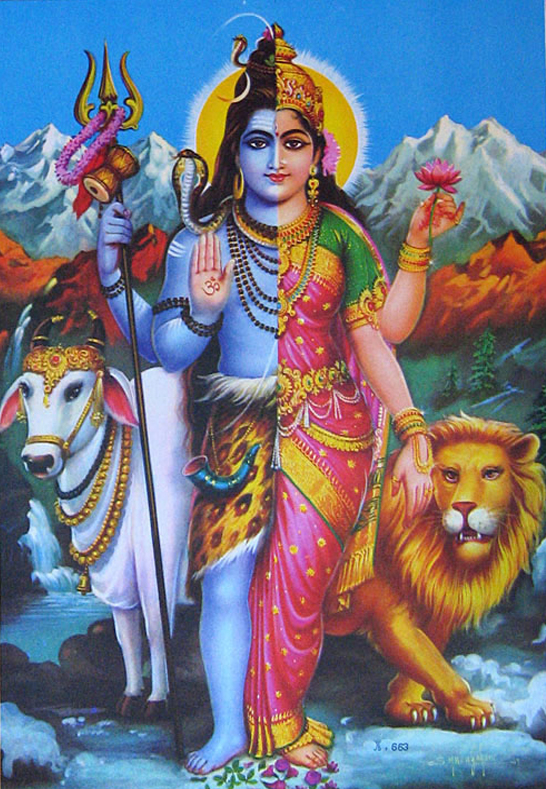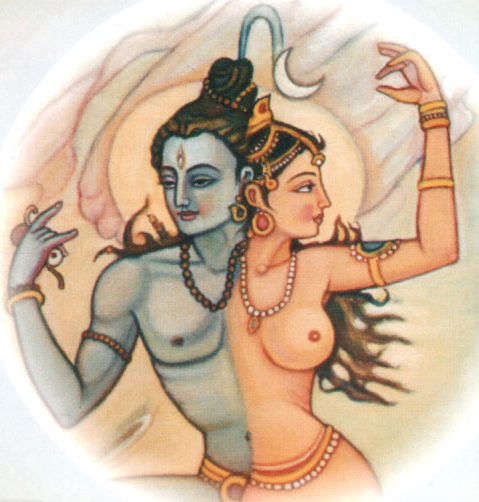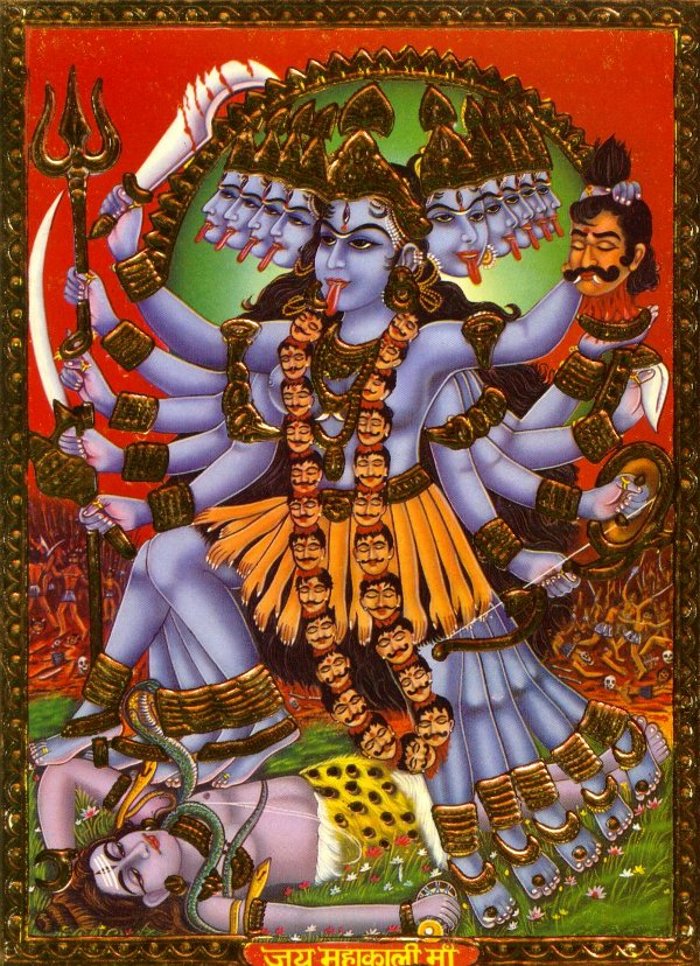In the Hinduism, the whole universe is perceived as being created, penetrated and sustained by two fundamental forces, which are permanently in a perfect, indestructible union. These forces or universal aspects are called Shiva and Shakti.

Shiva Shakti Ardhnarishwra
The ten hands of the omnipotent Goddess stand for Her protection of all the ten directions north, south, east, west, northeast, south-east, north-west, south-west, above and below. She is always satisfied which is the distinctive condition of a yogi with the highest of spiritual wisdom, and is shown smiling. She has a fair complexion which signifies Sattva or Morality at its best. At the top of the image the face of Shiva is indicated. With Her blessings,one reaches the Domain of Shiva (Shiva-Loka), which is of absolute peace.

Shiva Shakti
Thus, the dynamic principle- Shakti leads on to the attainment of the static principle- Shiva which constitutes the goal of human life. Shakti assumes the form of Mother Kali standing on the prostrate body of Lord Shiva, and is extensively worshipped in that form in the eastern part of India. Here She is worshipped in direct conjunction with Shiva whose changeless state is depicted in His lying down posture. Shakti, the principle of change, is shown as standing on Shiva signifying that all the changes in the universe are rooted in the principle of Changelessness.

Maa Kali – Shiva Shakti
Both Shakti and Shiva, the dynamic and the static principles, can be viewed from the macro and the micro points of view. At the macro Level, She is the receptacle of the universe, its inner strength and energy, and the guiding force behind it. It is She who has planned human nature the way it is, with the potentiality of the individual self’s final release through the attainment of Shivahood means the state of Shiva. At the micro level, She is the dormant divine force in its latent state of sleep, numbered as it is by the pre-spiritual state of the individual’s attractions to pleasures, at the bottom of his spine. The task of the aspirant is to revive the force in the upward direction of Shiva who is on the other end of the spine, letting it pass through five spiritual centres on the way. Their union is marked by a divine ecstasy, a moment symbolized by the abstraction of the Shiva Lingam, where the snake coiling around the Lingam symbolizes the upward movement of the latent force toward Shiva.